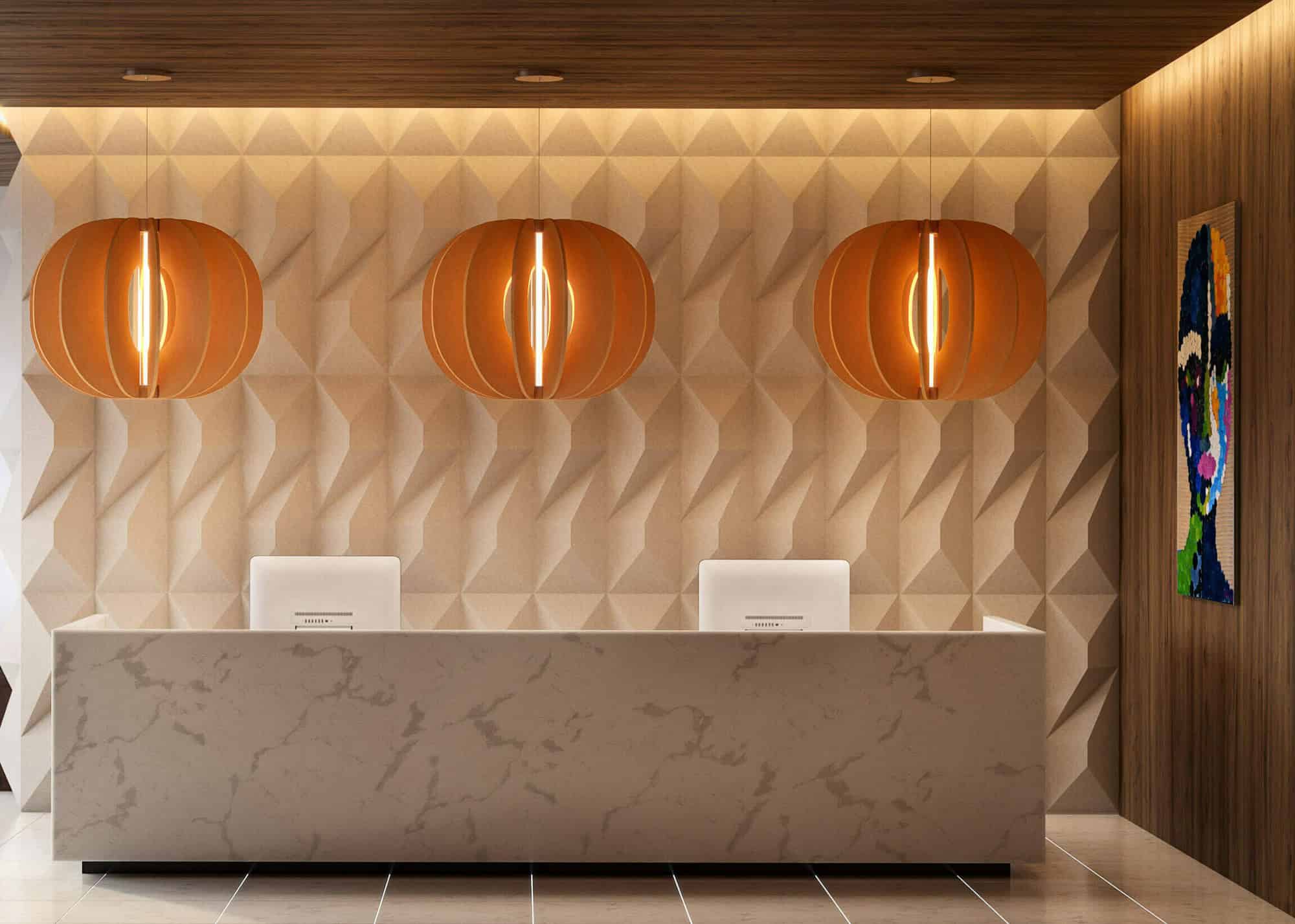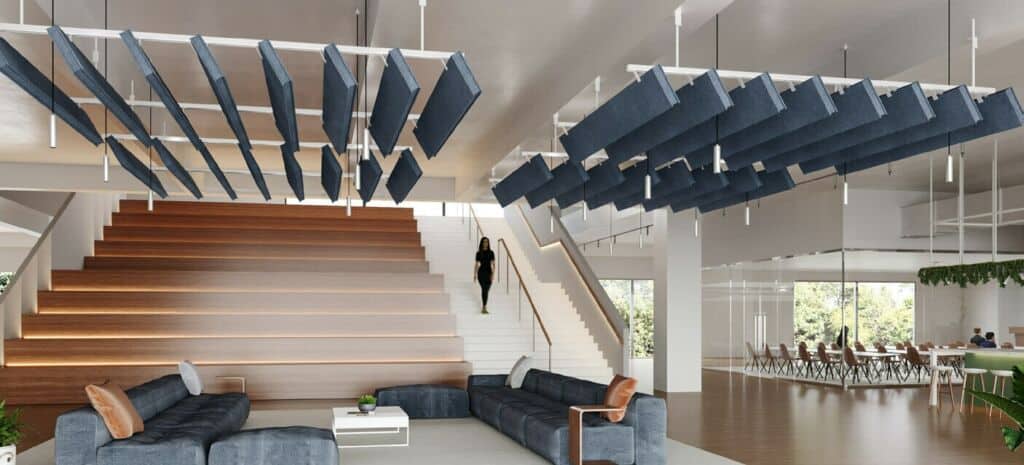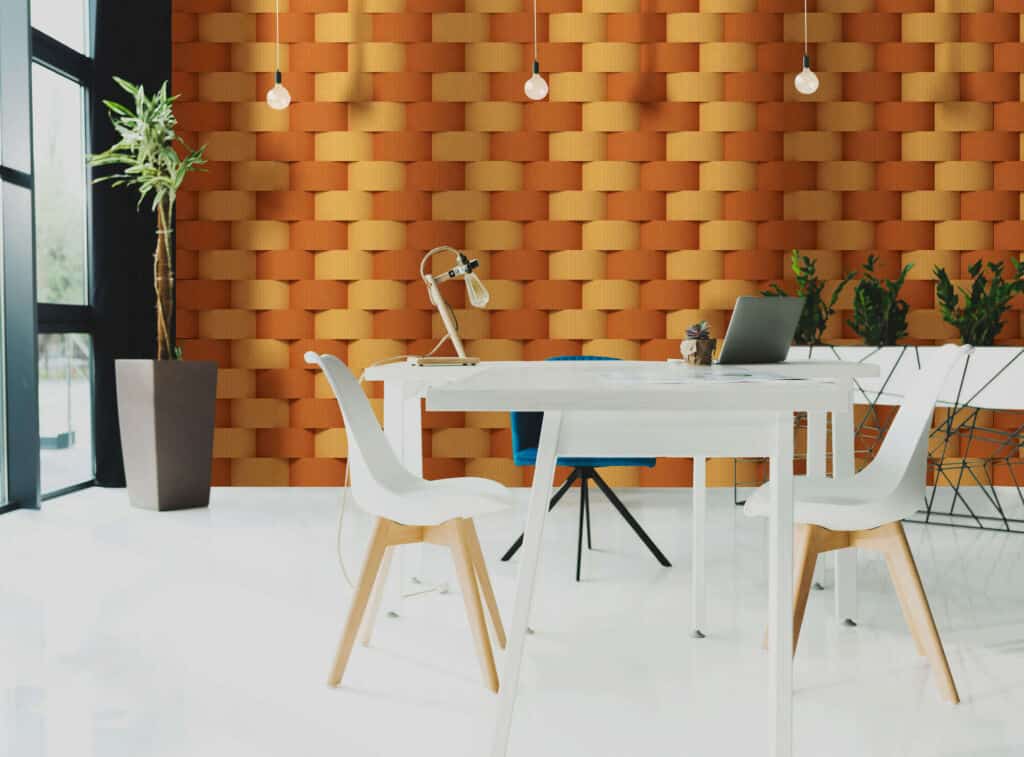Achieving ideal sound control in different spaces and settings is a complex process, and whether you’re starting a brand new construction project or planning a renovation, it’s important to take the acoustics of your finished spaces into account. As you consider the auditory experiences your office, residence or other facility will provide, a crucial metric to keep in mind is sound transmission class (STC) — a method for assessing how well building materials and design can reduce sound transmission.
This comprehensive article will not only explain what STC is but will also provide the STC ratings of common materials and discuss the complex process of determining which of these materials will best absorb sound in a given space.
Understanding Sound Transmission Class
STC is a numerical reflection of the sound insulation capability of a building element or partition — or in other words, a measurement of how well any given material is able to block sound. Materials with higher ratings are better at preventing sounds from passing through, while lower scores indicate that a material is less likely to be a sufficient barrier to noise.
To estimate STC, the acoustic performance — specifically, sound transmission loss — of different materials is tested in accordance with guidelines provided by the American Society for Testing Materials (ASTM). The resulting STC rating is a reflection of the material’s acoustic performance, specifically its capacity to reduce sound across the audible spectrum.
What Is a Good STC Rating?
What’s considered a decent STC rating varies and is largely dependent on the noise problem you’re trying to solve, as well as the outcome you hope to get. For example, a garage band practicing in your basement poses a much different set of acoustic challenges when compared to a world-famous rock group playing to a sold-out arena — just as a doctor’s office that requires HIPAA compliance and quiet may need a more targeted solution.
Additionally, whether or not a particular rating is “good” can depend on factors as simple as partition type, meaning that an acceptable STC rating for walls may differ from a satisfactory STC rating for floors.
That said, an STC rating of less than 40 generally means that you can hear most of what’s happening in adjacent rooms — prompting remarks about paper-thin walls and the like.
STC Rating Chart: A Breakdown of Commonly Used Materials
Choosing materials with high sound transmission class ratings is essential when building or retrofitting a room for sound control. When planning for the acoustics in your space, it’s important to have a proper understanding of various materials’ STC ratings. Materials with higher STC ratings, such as double stud walls or concrete block walls, are beneficial in areas that require maximum speech privacy, such as conference rooms or medical facilities.
Download our comprehensive chart, featuring STC ratings for commonly used materials >>
Calculating Sound Absorption Material Needs
Several factors contribute to determining how much sound absorption material a space needs. Overall, the objective is to achieve a balance that considers the environment’s particular acoustic features. Here’s how to calculate how much you need for your projects, step-by-step:
1. Determine the Target STC Rating
Calculate the target STC rating for the area based on acoustic needs and functions. Certain places, such as recording studios or residential areas, have specific requirements that affect the ideal STC rating.
2. Assess Existing STC
Determine all partitions’ and building components’ existing STC ratings. When choosing materials for improvement, this baseline assessment helps to clarify the current state of sound transmission in your space.
3. Choose Materials for Their STC Qualities
Select materials for sound absorption according to their STC ratings. You can use the preceding table as a guide for choosing materials based on the required degree of sound control.
4. Calculate What You Need for the Improvements You Want
Calculating the required improvement involves subtracting the target STC rating from the existing STC rating. The difference indicates the amount by which you’ll need to decrease sound transmission.
To figure out your needs, use the following formula:
Required Improvement = Target STC – Current STC
5. Examine Additional Factors
Consider elements like flanking routes or structural faults that can affect how sound travels. Compensating for these variables may require extra steps, such as constructing robust channels, boosting mass or sealing gaps.
6. Determine Surface Area and Material Coverage
To guarantee well-rounded and efficient sound absorption, measure the surface area of floors, walls and ceilings that may require sound absorption. Then compare the results against the potential coverage of your considered materials.
7. Adjust for Room Characteristics
Understand how a room’s features affect the amount of sound absorption required. Softer surfaces may require less absorption, whereas reflecting surfaces may require more. Achieve the necessary acoustic balance by customizing your treatment.
8. Seek Expert Evaluation
Seek out the advice of acoustic professionals or engineers in complicated situations or for projects requiring high security. An expert can offer thorough insights into the unique acoustic issues your space presents and recommend efficient remedies.
How to Raise STC Rating
Increasing the overall thickness of walls is the simplest method to raise your STC rating. Soundproofing walls with insulation or air space inside them also reduces sound transmission. For instance, a solid eight-inch wall would transmit more sound than two four-inch walls divided by a two-inch gap.
The STC rating will rise even higher if you fill the void with STC-rated insulation, such as CFAB, cellulose-based acoustical and thermal panels. While adding remedies to the space will prevent excessive noise levels from rising, significant modifications to your STC rating typically require structural adjustments.
The Bottom Line
A thorough analysis of the necessary sound absorption material and a sophisticated understanding of STC ratings are required to achieve the best possible sound management in a given space.
Designers and architects may create spaces that perfectly blend privacy, comfort and clarity by considering the particular qualities of each area, defining realistic goals and using materials with the proper STC ratings. Thoroughly understanding STC and sound absorption calculations is the key to achieving architectural excellence as the market for acoustically polished rooms grows.
At DGI Communications, we can help you manage acoustic challenges to enable a positive auditory experience for your employees, clients and other visitors in your space. If you have questions about how to meet the acoustic needs of your spaces, or to learn more about how we can assist you, contact DGI today!



